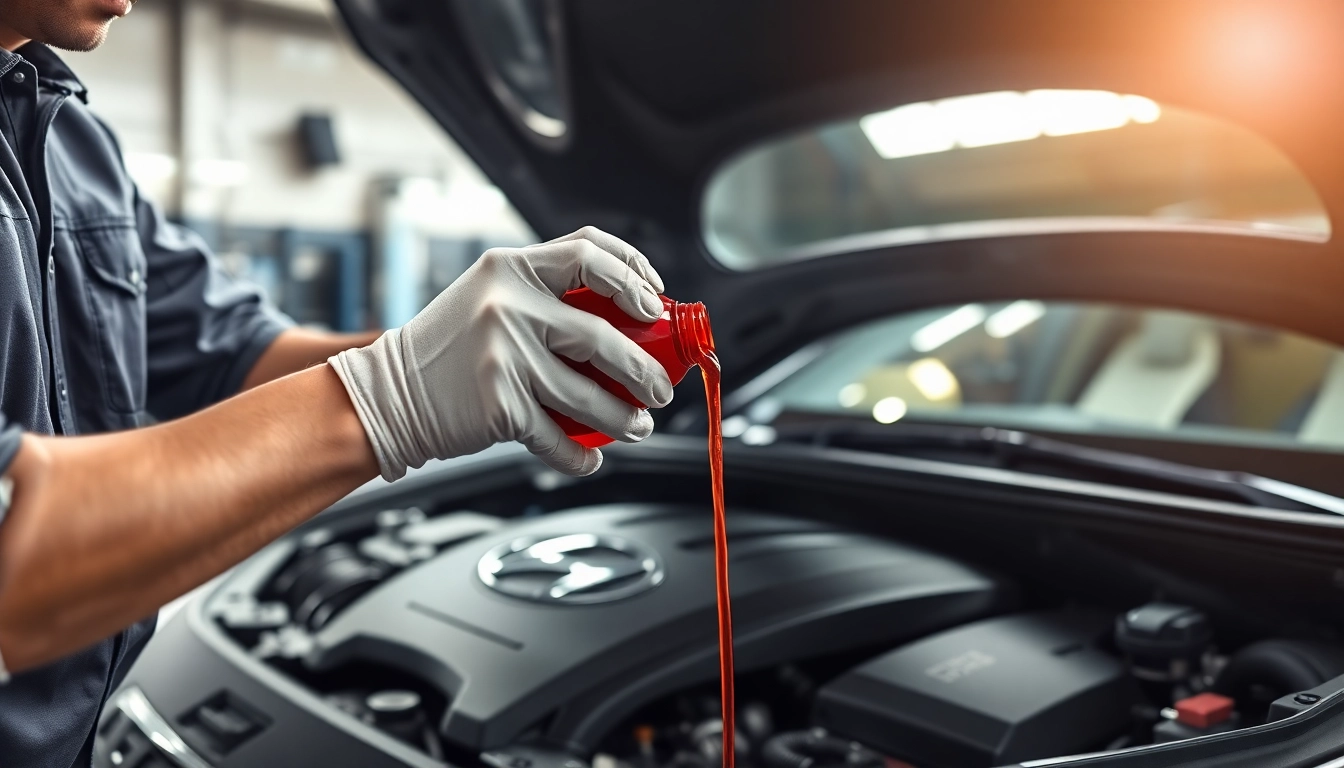Understanding Transmission Fluid in Hyundai Vehicles
What is Transmission Fluid and Its Purpose?
Transmission fluid is a specialized fluid used in automatic and some manual transmissions that serves multiple functions. It is essential for the smooth operation of the vehicle’s transmission, providing lubrication, cooling, and hydraulic pressure necessary for shifting gears. The fluid also helps to clean and protect the transmission components by preventing wear and corrosion.
This fluid plays a crucial role in ensuring optimal vehicle performance, particularly in Hyundai models where the brand has specific requirements for the type of transmission fluid to be used. Using the correct transmission fluid hyundai ensures that your vehicle operates smoothly and maintains the manufacturer’s reliability standards.
Types of Transmission Fluid Recommended for Hyundai
Hyundai typically recommends a few specific types of transmission fluids for their vehicles, including:
- SP-III: This is a common fluid used in many older Hyundai models. It provides excellent hydraulic stability and is designed for use under a wide range of temperatures.
- SP-IV: This fluid offers improved performance and protection, especially in newer models. It is formulated for longer life and better resistance to breakdown.
- SP-LL: Used in some hybrid and electric models, this fluid supports additional requirements specific to those transmissions.
Each type of fluid has distinct properties engineered to match the specific needs of different Hyundai transmission systems.
Importance of Using the Correct Transmission Fluid
Using the correct transmission fluid is vital for several reasons:
- Optimal Performance: The right fluid ensures smooth shifting and optimal power transfer from the engine to the wheels.
- Protection: It helps protect the transmission against wear, preventing costly repairs and extending the transmission’s lifespan.
- Warranty Compliance: Using the prescribed fluid helps avoid voiding the vehicle warranty.
Therefore, Hyundai owners must be diligent in selecting the proper fluid, as it can significantly affect the overall functionality and longevity of their transmission system.
How to Check Your Hyundai’s Transmission Fluid
Visual Indicators of Transmission Fluid Quality
Checking transmission fluid quality is an essential maintenance step, and there are visual indicators to help determine its condition:
- Color: Fresh transmission fluid is typically a bright red color. If the fluid appears brown or dark red, this may indicate it needs to be changed.
- Consistency: The fluid should feel smooth and slippery. If you notice a gritty texture, contaminants may be present.
- Odor: If the fluid smells burnt, it is a sign of overheating and requires immediate attention.
Step-by-Step Guide to Checking Fluid Level
Here’s how to check the transmission fluid level in your Hyundai:
- Start your engine and let it warm up for a few minutes.
- Park the vehicle on a flat surface, and with the engine running, shift through each of the gears, stopping at “Park” or “Neutral.”
- Locate the transmission dipstick, usually found near the back of the engine bay.
- Remove the dipstick and wipe it off with a clean cloth.
- Reinsert the dipstick fully and remove it again to check the fluid level against the marks on the dipstick.
- If the fluid is low, add the recommended transmission fluid gradually, checking frequently until the correct level is reached.
Common Mistakes When Checking Transmission Fluid
To ensure accurate readings and proper maintenance, avoid the following common mistakes:
- Not warming up the engine: Checking fluid levels while the engine is cold can lead to inaccurate readings.
- Using the wrong dipstick: Ensure that you are using the transmission dipstick, not the oil dipstick, as they are different.
- Neglecting to check for leaks: Always inspect for potential leaks or drips around the transmission to ensure all fluid is contained.
When to Change Your Hyundai’s Transmission Fluid
Manufacturer Recommendations for Fluid Change Intervals
Hyundai has specific recommendations for when to change transmission fluid, typically around every 60,000 miles, but this can vary depending on the model and driving conditions. It’s always wise to check the owner’s manual for specific intervals related to your vehicle.
Signs Your Transmission Fluid Needs Replacement
Recognizing signs that your transmission fluid requires replacement can help prevent significant issues:
- Delayed or harsh shifting during gear changes
- Unusual noises, such as whining or grinding, while in gear
- The dashboard warning light for the transmission coming on
- Fluid that is dark, dirty, or has a burnt smell
Importance of Regular Maintenance
Regular transmission fluid maintenance contributes to the overall health of your Hyundai:
- Extends Lifespan: Keeping the transmission fluid clean and topped off ensures components remain safeguarded from wear and tear.
- Enhances Performance: Well-maintained fluid contributes to smoother and more efficient shifting.
- Averts Costly Repairs: Early detection of fluid issues can prevent major transmission repairs, saving money in the long run.
Choosing Between OEM and Aftermarket Transmission Fluids
Comparative Benefits of OEM Transmission Fluids
Using Original Equipment Manufacturer (OEM) transmission fluids often provides several advantages:
- Designed for Compatibility: OEM fluids are specifically formulated for Hyundai transmissions, ensuring maximum compatibility.
- Enhances Warranty Compliance: Using the manufacturer’s recommended fluids can help preserve your vehicle’s warranty.
- Quality Assurance: OEM products typically undergo rigorous testing to meet strict manufacturing standards.
When to Consider Aftermarket Options
Aftermarket transmission fluids can be a viable alternative in certain situations:
- Cost-Effectiveness: Aftermarket options are often less expensive while still meeting adequate performance standards.
- Availability: In some cases, specific OEM fluids may be difficult to find or may have long wait times.
- Enhanced Features: Some aftermarket fluids incorporate additives designed to improve performance beyond OEM specifications.
How to Select Quality Aftermarket Transmission Fluids
If you decide to opt for an aftermarket transmission fluid, here are key considerations for making a selection:
- Check for Certification: Look for fluids that meet or exceed OEM specifications.
- Read Reviews: Consider user feedback on performance and reliability.
- Consult Professionals: Asking for recommendations from trusted automotive professionals can provide valuable insights.
FAQs About Hyundai Transmission Fluid Maintenance
How Often Should Hyundai Transmission Fluid Be Changed?
Most Hyundai vehicles require a transmission fluid change approximately every 60,000 miles, although some newer models may have extended intervals. It is advisable to follow the guidelines outlined in your owner’s manual for the most accurate information.
What Happens If You Use the Wrong Transmission Fluid?
Using the incorrect transmission fluid can lead to several issues:
- Poor Shifting Quality: The vehicle may exhibit rough or erratic shifting.
- Overheating: Incorrect fluid may lack the necessary properties to effectively lubricate and cool the transmission, leading to overheating.
- Increased Wear: Incorrect fluids can cause undue wear on transmission components, potentially resulting in costly repairs.
How Can I Tell If My Transmission Fluid Is Leaking?
Identifying a transmission fluid leak is crucial for immediate repairs. Common signs include:
- Presence of red or brown puddles underneath where the car is parked
- Fluid spots or stains on your driveway or parking surface
- The transmission dipstick reading low on fluid even shortly after refilling



